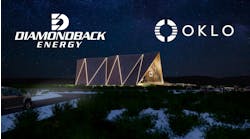The Eugene Water & Electric Board — a forward-looking utility known for its green programs — has launched three solar microgrid test projects with an eye toward planning for a future in which it can use the microgrids to bid into organized markets.
But that’s not all the 25- 75-kW microgrids can do for EWEB, said Will Price, energy resource analyst. Microgrids can provide resiliency — especially if a big earthquake hits Oregon, as anticipated. And microgrids can help with peak shaving and automated generation control, he said.
EWEB received $250,000 in funding from the US Depart. of Energy’s Office of Electricity Delivery and Energy Reliability, and the Oregon Dept. of Energy, along with Oregon BEST, awarded an additional $45,000.
Solar microgrids will be installed in three locations — its Roosevelt Operations Center, which is the company’s command and control center; the Blanton Heights communications tower, which provides critical communications for police, fire and other services; and a central water pumping station.
The three sites will be connected to EWEB’s grid to charge the batteries when there’s no sun available and EWEB will continue to use diesel generators as emergency backup. The Roosevelt Operations Center now has a solar system and would be home to the bigger, 75-kW microgrid; EWEB would add solar to the other two sites, Price said. All the sites would be connected to one another.
“We anticipate as the cost of solar and storage come down and organized markets gain ground, we will be able to bid into them,” Price said. “Another driver is resiliency. An earthquake could break our connection with BPA transmission.” In addition, microgrids can help EWEB with peak shifting, meaning the microgrids would store energy to be used during peak periods, avoiding the use of costly other resources.
“We also want to look at automated generation control,” he said. All of EWEB’s generators have to be synchronized to the same hertz signal. When customer load grows, the company has to ramp up its generators and if it decreases, it has to back off its generators. Batteries can serve as ‘generator’ in this effort.
Long-term, EWEB is interested in selling into organized markets, including the California ISO. “It has been expanding rapidly and Pacific Power (based in Oregon) now wants to be a full transmission member. The Californian ISO is less California-focused now, but a single market with a broader governing structure,” Price said. EWEB would like to bid demand response into the market and also aggregate its customers’ loads and resources and bid them into the organized market. Microgrids would help in that effort by providing storage, he said.
“They are allowing aggregated small resources like demand response and storage and solar to get packaged up and bid into market,” he said. When the ISO gains more experience doing this, EWEB would like to participate.
The microgrids could also help EWEB focus on community solar, Price said.
EWEB wants to also look into community solar. “If we can co-locate community solar with a critical infrastructure and a disaster recovery microgrid, we’d have another tangible benefit. It would support the local community’s resiliency.”
Track news of the growing West Coast microgrid market by subscribing to the free Microgrid Knowledge newsletter.







